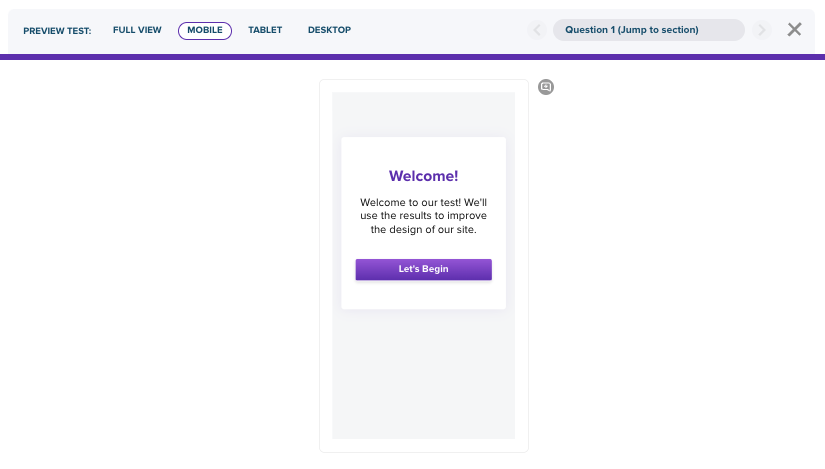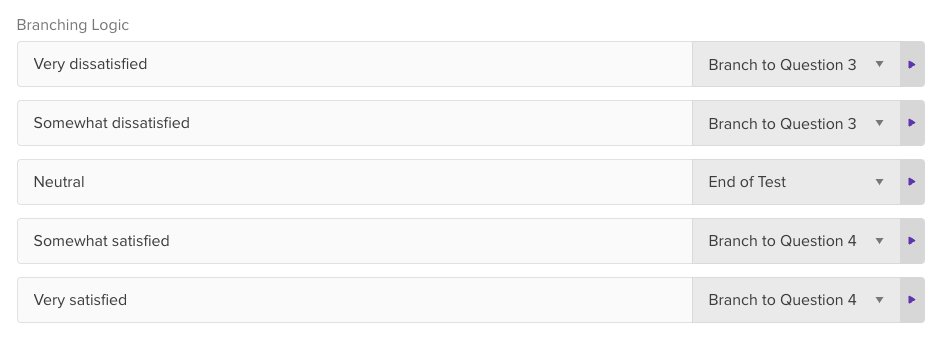Understanding Survey Piping: What You Need to Know
In survey research, survey piping is a powerful tool that allows researchers to create more dynamic and personalized surveys. By customizing survey questions based on respondents’ previous answers, survey piping helps to enhance survey relevance and improve response rates. In this article, we will dive deep into the concept of survey piping, exploring its definition, importance, functionality, and implementation.
🔩 The Nuts and Bolts:
- Survey Piping is a process of dynamically inserting answers or information from previous questions into subsequent questions or survey content.
- It provides a more personalized survey experience for respondents, shows their input is valued, and leads to higher completion rates.
- Placeholders are placed within the surveys to indicate where the respondent’s previous answers should be inserted.
- Survey software must be able to capture and store respondent data throughout the survey completion process.
- The benefits of using survey piping include enhancing survey relevance, improving response rates, and reducing survey fatigue.
- The process of survey piping involves creating the initial survey question, inserting piping markers, defining piping logic, and testing/refining before launch.
- Types of survey piping include question piping & answer piping.
- Common mistakes to avoid when using Survey Piping include over-complicating the piping logic, not testing thoroughly, and skipping considerations on the overall survey flow structure.
Defining Survey Piping
At its core, survey piping refers to dynamically inserting answers or information from previous questions into subsequent questions or survey content. This means that respondents see questions tailored to their specific responses, creating a more personalized survey experience.
Survey piping is a powerful tool that allows researchers to gather more detailed and relevant information from respondents. By incorporating their previous answers into subsequent questions, survey piping eliminates the need for repetitive or redundant questions, making the survey more efficient and engaging.
Furthermore, survey piping can enhance the overall survey experience for respondents. By customizing the questions based on their previous responses, it shows their input is valued and the survey is designed to meet their specific needs. This personalization can lead to increased respondent satisfaction and higher completion rates.
The Basics of Survey Piping
Survey piping works by using placeholders—or markers—within survey questions or content. Actual respondent data then replaces these markers during the survey administration. These markers act as reference points, allowing the survey software to identify and display the relevant information in real time.
These placeholders can take various forms, such as question codes, answer codes, or variable names. They are strategically placed within the survey to indicate where the respondent’s previous answers should be inserted. When the survey is administered, the software retrieves the corresponding data and populates the placeholders accordingly.
For example, if a respondent indicates that their favorite color is blue in one question, survey piping can be used to incorporate this information into subsequent questions or content dynamically. This enables the survey to refer to the respondent’s favorite color when asking about their preferred clothing style or interior design preferences.
This level of personalization not only makes the survey more engaging for respondents and allows researchers to gather more accurate and insightful data. By tailoring the questions based on the respondent’s previous answers, survey piping minimizes the chances of ambiguity or misinterpretation, leading to more reliable results.
Drive your marketing research forward with Helio
Get insights from your target audience in minutes
Technical Aspects of Survey Piping
To implement survey piping effectively, survey software must be able to capture and store respondent data throughout the survey completion process. This data is then retrieved and inserted into the relevant survey elements using predefined rules and logic.
The survey software tracks and stores the respondent’s answers as they progress through the survey. This data is typically stored in a database or structured format, allowing easy retrieval and manipulation. When survey piping is enabled, the software retrieves the necessary data and replaces the placeholders with the actual respondent information.
Additionally, survey piping requires careful consideration of branching and skip logic. Respondents may be directed to different survey sections or presented with alternative questions depending on how certain questions are answered. This ensures that the survey flow remains cohesive and logical, providing a seamless experience for respondents.
Researchers can create a more personalized and efficient survey experience by incorporating branching and skip logic into survey piping. Respondents are guided through the survey in a way relevant to their specific circumstances, eliminating unnecessary questions and reducing survey fatigue.
In conclusion, survey piping is a valuable technique for enhancing the survey experience for researchers and respondents. By dynamically incorporating previous answers into subsequent questions, survey piping creates a more personalized and efficient survey process, leading to more accurate and insightful data. With the right survey software and careful consideration of technical aspects, survey piping can be implemented successfully to improve the quality and effectiveness of surveys.
The Importance of Survey Piping
Survey piping is a crucial tool for researchers looking to maximize the relevance and engagement of their surveys. By incorporating piping into surveys, researchers can achieve the following benefits:
Enhancing Survey Relevance with Piping
By tailoring questions to respondents’ specific answers, survey piping allows researchers to elicit more accurate and meaningful responses. Rather than presenting generic questions, piping ensures that each respondent is given questions that align with their previous responses, resulting in more relevant and personalized surveys.
For example, imagine a survey about customer satisfaction with a company’s products. With survey piping, researchers can ask follow-up questions based on the product or service the respondent mentioned as their favorite. This personalized approach makes the survey more engaging and provides valuable insights into what aspects of the product or service resonate with customers.
Furthermore, survey piping can create branching logic, where respondents are directed to different questions based on their previous answers. This allows researchers to delve deeper into specific areas of interest and gather more detailed feedback from respondents.
Subscribe to Closing the Gap
A newsletter to help makers and doers get closer to customers. Learn more.
We believe in protecting your data. Here’s our Privacy Policy.
Improving Response Rates through Piping
Surveys perceived as relevant and engaging are more likely to generate higher response rates. With survey piping, researchers can create a more interactive and conversational experience, keeping respondents interested and motivated to complete the survey till the end.
One way survey piping can enhance response rates is by reducing survey fatigue. Long surveys with repetitive questions can lead to respondent disengagement and abandonment. However, by using piping to dynamically change the survey flow and present questions based on previous responses, researchers can keep the survey experience fresh and engaging.
Moreover, survey piping can also show respondents their progress throughout the survey. Respondents are more likely to stay committed and complete the survey by displaying a progress bar or indicating the remaining questions.
Additionally, survey piping can be used to provide real-time feedback to respondents. For example, if a respondent selects a low rating for a particular question, the survey can immediately display a follow-up question asking for further clarification or suggestions for improvement. This interactive approach shows respondents that their opinions are valued and encourages them to provide more detailed and thoughtful responses.
In conclusion, survey piping is a powerful tool that enhances the relevance and engagement of surveys. Researchers can gather more accurate data and improve response rates by tailoring questions to respondents’ specific answers and creating a more interactive survey experience. Incorporating survey piping into research methodologies can lead to more insightful findings and drive better decision-making processes.
How Survey Piping Works
Understanding the process of survey piping is fundamental to harnessing its power effectively. Let’s take a closer look at how survey piping works:
The Process of Piping in Surveys
The process of survey piping typically involves four main steps:
- Create the initial survey question: Start by designing the initial question to serve as the basis for subsequent piping.
- Insert piping markers: Identify and place piping markers at specific points in the question or content.
- Define piping logic: Set up the rules and conditions that determine when and how the piping should occur based on respondents’ previous answers.
- Test and refine: Before launching the survey, thoroughly test the piping functionality to ensure it works as intended. Make any necessary adjustments or refinements.
🚀 If you’re using Helio
Use Preview Mode to validate your branching logic before going live with your survey.

Previewing surveys can help identify pain points in your surveys, such as broken branching logic.
Understanding Piping Logic
Piping logic plays a crucial role in the effectiveness of survey piping. It enables researchers to control the survey flow and determine which questions or content to display based on respondents’ previous answers.
For instance, piping logic can skip irrelevant questions or display alternative response options based on specific conditions. Researchers can create a cohesive and tailored survey experience for each respondent by carefully designing and implementing piping logic.
Different Types of Survey Piping
Survey piping can take various forms, depending on the goals and requirements of the research study. The two main types of survey piping are:
Question Piping
Question piping involves incorporating answers from previous questions into subsequent related questions. This allows researchers to build on respondents’ previous answers and delve deeper into specific topics of interest. Question piping helps to maintain continuity in the survey flow and ensures respondents do not see prompts to provide redundant information.
Answer Piping
Answer piping, on the other hand, involves incorporating previously selected answer options into subsequent questions or content. This is particularly useful when respondents are provided with predefined response choices. Answer piping allows researchers to refer to the respondents’ selected options and customize the next set of questions accordingly.
🚀 If you’re using Helio
Branching Logic lets you build custom pathways for participants in surveys.

Use branching on multiple choice questions, or branch participants based on where they click on a page.
Implementing Survey Piping
Implementing survey piping in your research studies requires careful planning and execution. Here are some essential steps to incorporate piping in your survey:
Steps to Incorporate Piping in Your Survey
- Design your survey: Start by structuring your survey and identifying areas where you can implement piping
- Define piping markers: Determine where to place the piping markers in the survey to capture and retrieve relevant data.
- Set up piping logic: Establish the rules and conditions that govern when and how piping should occur based on respondents’ previous answers.
- Test and refine: Thoroughly test the piping functionality to ensure its accuracy and make any necessary refinements before launching your survey.
Common Mistakes to Avoid When Using Survey Piping
While survey piping can greatly enhance the quality of your surveys, there are a few common mistakes researchers should be aware of and avoid:
- Over-complicating the piping logic: Keep your piping logic as simple and straightforward as possible to avoid confusion for respondents and researchers.
- Not testing thoroughly: Test the piping functionality before launching your survey to identify and fix any issues or errors.
- Skipping survey flow considerations: Consider the overall survey flow and ensure that piping integrates seamlessly into the structure.
By paying attention to these potential challenges, you can ensure a smooth and effective piping implementation in your surveys.
In conclusion, survey piping is a valuable tool that allows researchers to create more personalized and engaging surveys. By tailoring survey questions and content to respondents’ specific answers, survey piping enhances relevance and boosts response rates. Understanding the basics, implementing proper piping logic, and avoiding common pitfalls can greatly maximize the benefits of survey piping in your research studies. So why settle for generic surveys when you can unlock the power of piping?
Survey Creation 101
FAQs
Survey piping is a process of dynamically inserting answers or information from previous questions into subsequent questions or survey content. It provides a more personalized survey experience for respondents, shows their input is valued, and leads to higher completion rates.
The benefits of using survey piping include enhancing survey relevance, improving response rates, and reducing survey fatigue.
The process of survey piping involves creating the initial survey question, inserting piping markers, defining piping logic, and testing/refining before launch.
The two main types of survey piping are question piping and answer piping.
The steps for incorporating piping in a survey include designing the survey, defining piping markers, setting up piping logic, and testing and refining.
Common mistakes to avoid when using survey piping include over-complicating the piping logic, not testing thoroughly, and skipping considerations on the overall survey flow structure.
Survey piping is a process of dynamically inserting answers or information from previous questions into subsequent questions or survey content. It provides a more personalized survey experience for respondents, shows their input is valued, and leads to higher completion rates.
The benefits of using survey piping include enhancing survey relevance, improving response rates, and reducing survey fatigue.
The process of survey piping involves creating the initial survey question, inserting piping markers, defining piping logic, and testing/refining before launch.
The two main types of survey piping are question piping and answer piping.
The steps for incorporating piping in a survey include designing the survey, defining piping markers, setting up piping logic, and testing and refining.
Common mistakes to avoid when using survey piping include over-complicating the piping logic, not testing thoroughly, and skipping considerations on the overall survey flow structure.












